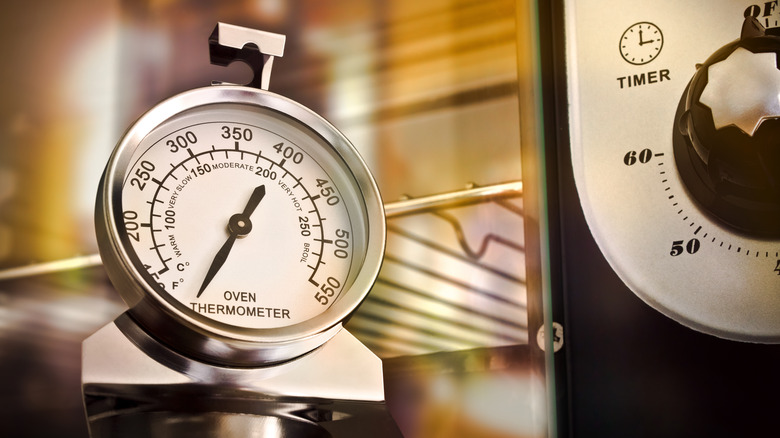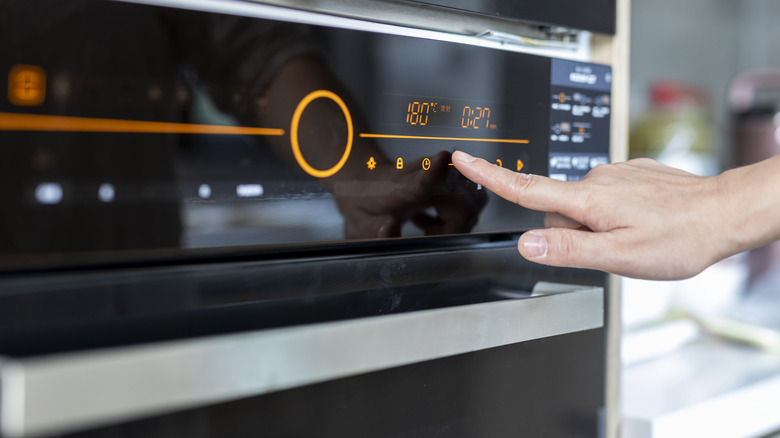The Reason You Should Consider Investing In An Oven Thermometer
Baking is a science. And like other sciences, it's all about precision. For most, this means using a digital weighing scale and the timer on their phone. Most of the time, that's all you really need. For more forgiving baked goods, like a French yogurt cake or an orange bundt cake — especially for the home baker — the fine margins aren't too much of a worry. But if you want to bake like a true pro, a little precision goes a long way.
The easiest way to achieve this is with an oven thermometer. No, not the kind you stick in your turkey every Christmas — it's as simple as a $10 dial you place in your oven that tells you the real story about how hot it is. The truth is, most people have no idea what temperature their oven is actually running at. Sure, you might have set it to 350 degrees Fahrenheit — but how do you know for sure that's what you're getting? Did you calibrate your oven? The answer is probably no.
This can affect your baking, too. When it comes to cakes, for example, a higher temperature will yield a more intense rise and a crisp, browned crust (perfect for muffins), while a lower one will result in a much fluffier sponge without that cracking top (exactly the flexibility you want when making a chocolate and peanut butter Swiss roll, for example).
Using your oven thermometer to improve your baking
Okay, so you've got yourself an oven thermometer. Now what? Most oven thermometers either sit on a rack or hang inside the oven. Contrary to what you might think, you don't need to constantly monitor the temperature. Using your thermometer every so often is all it takes.
Place your thermometer as close to the center of the middle rack as you can, because you want to take your readings where the majority of your baking happens — temperature can drastically vary throughout the oven. Set your oven to a given temperature (350 degrees Fahrenheit, for example) and let it run for an hour or so. Take a few readings throughout that period, as your oven will cycle on and off to maintain a consistent temperature (so you might see some variation). Then, do a little math to find the average of all your readings, and you'll know just how close (or not, as the case may be) your oven's actual temperature is to where you set it.
Once you know this, you can adjust how you set your oven's temperature. If your oven is off by 20 degrees, set it to 370 degrees Fahrenheit, not 350, and so on. It really is that easy! Try it, and watch your baking instantly improve.


